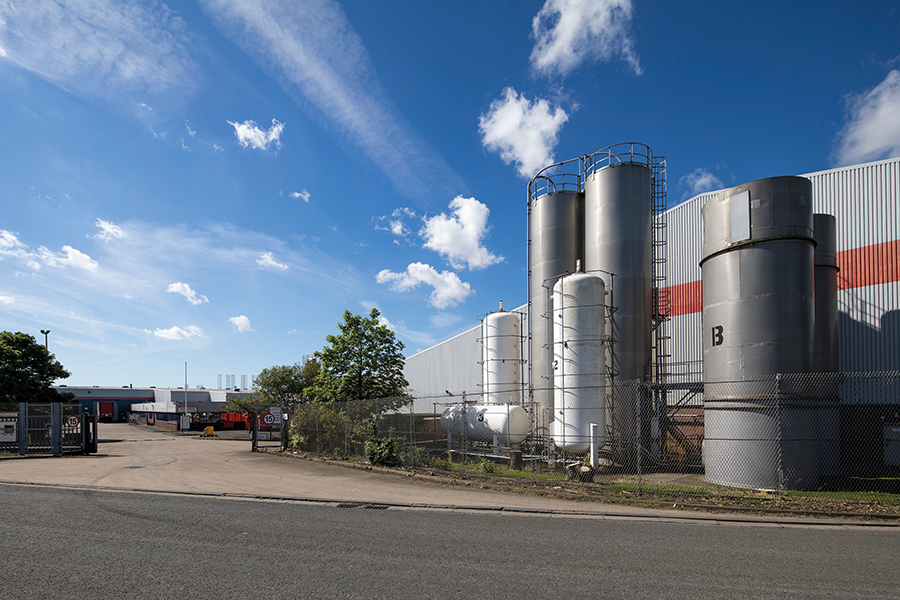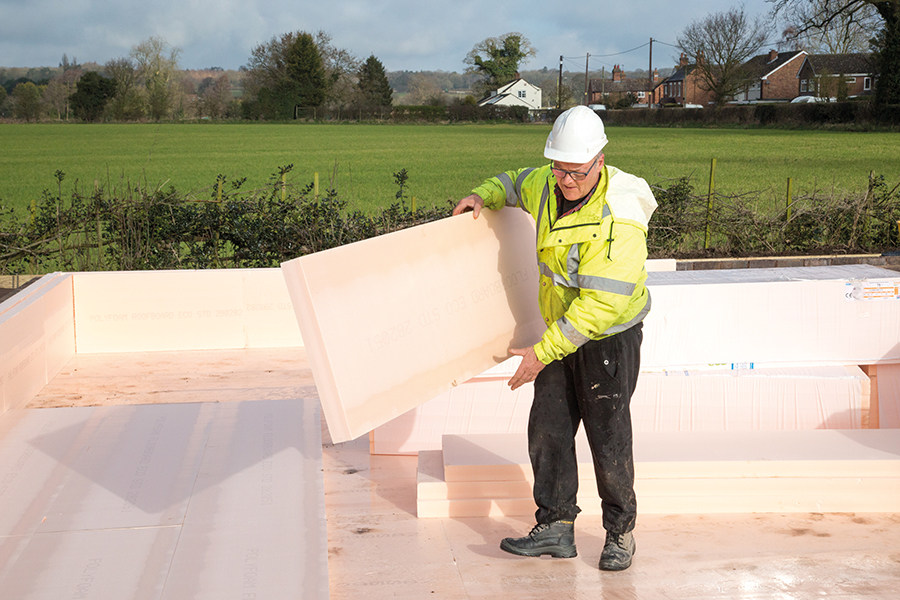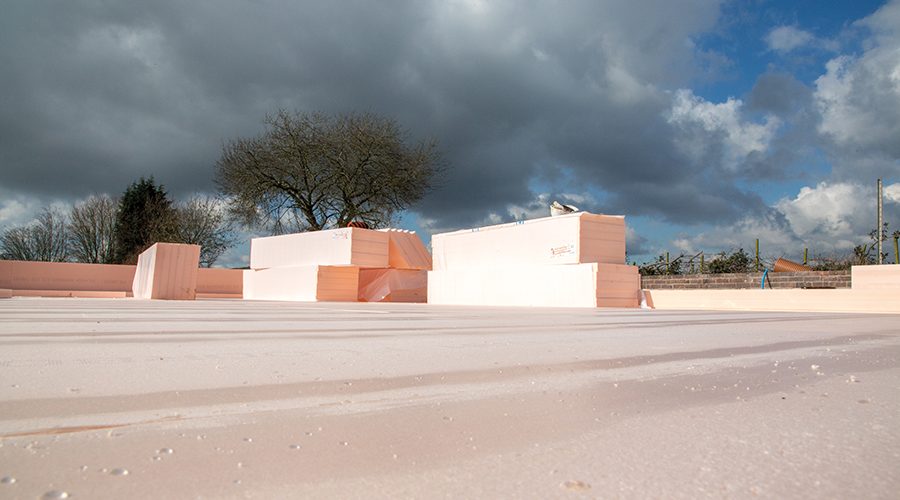Rob Firman, Technical and Specification Manager at Polyfoam XPS, highlights the common misconceptions about ground floor insulation and offers guidance on specification and installation.
Polyfoam XPS
In many cases with insulation, materials are as likely to be identified by colour and visual appearance as they are by knowledge of their performance characteristics.
Unless it is a system requiring specialist installation equipment, like blown cavity wall insulation, there are no specialist insulation installers in the construction industry. Floor insulation tends to be considered an ‘extra’, carried out by other specialists – like screeding contractors – as part of their work.
There are however, key differences between rigid insulation types and it’s important to know what these are. That’s because if one material is specified, but an alternative material is offered, purchased and installed, that other material may not offer the same performance.
With specification switching, if an alternative product has a worse thermal performance, the building may not comply with energy efficiency requirements. If it is not capable of bearing the same loads, there could be a failure of the floor.
This article will offer guidance on the different types of ground floor insulation available, and what to consider when specifying and installing these products.
The true purpose of insulation
In the history of our built environment, floor insulation is still a relatively recent phenomenon. Experienced designers and contractors may remember when it did not feature in build-ups at all.
Over the last couple of decades, the performance required from buildings has made high levels of thermal insulation a necessity in all building elements. As a result, floor insulation’s primary function is to resist the flow of heat energy from the building’s interior down into the ground.
However, a ground floor construction also bears the load of all the people, furniture, fixtures and fittings in a building – even vehicle movements in some cases. Those loads transfer through the floor insulation, in addition to the dead weight of any screed or slab over it, so it has to be sufficiently strong as well as performing thermally.
The loadbearing nature of ground floor insulation means compressible materials are unsuitable. Rigid insulation materials, sold as boards, or sheets, slabs, or panels, depending on your preferred terminology, not only bear loads with relative ease, but their large-format sheet sizes can be laid quickly and easily over the floor’s surface area.
Insulation comparisons
Rigid insulation materials are mainly lightweight, plastic-based rigid foam insulations.
In recent years, vacuum insulated panels (VIPs) have begun to offer an alternative to the more common board stock materials. However, these products are best suited to refurbishment projects where the depth of insulation is constrained. The table shown highlights how VIPs compare to other insulation types.
Both phenolic and PIR foams derive some of their long-term thermal performance from facing materials that restrict the loss of the gas in the foam structure. Protecting those facings is important to ensure they perform for the life of the building.
That means keeping water away from the insulation boards, regardless of them being closed cell materials with low rates of water absorption. They should always be installed above the damp proof membrane (DPM), and never laid exposed directly to the ground.
Similarly, although EPS insulation has no facings that are susceptible to damage from alkalis or moisture, its capacity for moisture absorption means it must still be installed above the DPM.
As the table shows, EPS is capable of much greater loadbearing capacity than phenolic and PIR foams – but is also made available in lower compressive strengths. Even with compressive strengths exceeding 120 or 140 kPa, manufacturers of phenolic and PIR products can be extremely cautious about offering their insulation for anything more than light commercial applications.


| Insulation Type | Known as | Typical thermal conductivity (W/mK) | Typical compressive strength (kPa) |
|---|---|---|---|
| Extruded polystyrene | XPS | 0.033 to 0.036, depending on grade | 200 to 500, depending on grade |
| Expanded polystyrene | EPS | 0.032 to 0.038, depending on grade | 70 to 250, depending on grade |
| Polyisocyanurate | PIR | 0.022 | 140 |
| Phenolic foam | PF | 0.018 | 120 |
| Vacuum insulated panels | VIP | 0.007 | 150 |
Comparing EPS and XPS insulation
As different types of polystyrene insulation, price tends to be the common differentiator between EPS and XPS. However, the significantly increased compressive strength offered by higher grades of XPS makes it the only choice for certain applications – particularly those involving vehicular traffic.
Like EPS boards, XPS products are typically unfaced, but they offer another important advantage – lower moisture absorption. They are more tolerant of wet conditions, so can be installed against the ground without affecting performance over time.
It’s not uncommon for phenolic and PIR foam manufacturers to receive questions about the suitability of their products for being laid on the ground, usually because they were installed below the DPM and somebody has queried the correct sequencing. More often than not it is too late to do anything, since there is an understandable lack of appetite to break up a freshly-poured concrete slab.
The floor will be accepted as-is, with no penalty to anyone except the end user – and their energy bills – if the thermal efficiency gradually worsens over time. XPS might need a slightly increased thickness to reach the same intended U-value, but can offer a more robust and flexible solution as it can be positioned above or below the DPM and is resilient if exposed to moisture.
Making the right choice
There can often be little difference in how XPS and EPS products are perceived, which is concerning when there is such wide variation in the performance range of EPS products. And because PIR and phenolic foams offer superior thermal performance, it’s not uncommon for it to be assumed that they are superior in compressive strength too.
Sometimes, insulation is simply used as a void-filling material. While there is nothing wrong with that, the desire to use the cheapest material
might lead to the conclusion that the cheapest material will suffice for any ground floor construction.
It’s not hard to see why confusion can arise regarding insulation specification and installation. However, a greater awareness and understanding of insulation products can significantly reduce risks on site and ease installation.
It’s important to value the thermal and loadbearing performance of materials over how much they cost to ensure ground floor construction performs as expected. And if a product substitution can’t be avoided, make sure the same material type is used with an equivalent performance.
If in doubt, seek advice from the insulation manufacturer’s technical team who should be able to guide you on specification and installation, including u-value calculations.







